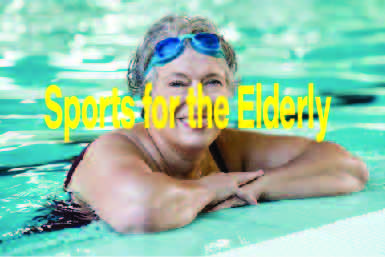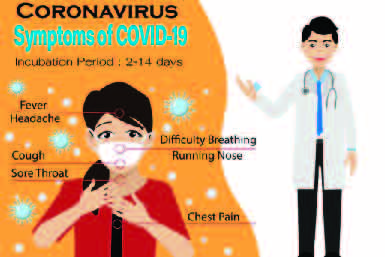Sports for the Elderly

Sports are often associated with the vigor and energy of youth, but the benefits of engaging in physical activities extend well into the golden years. In this article, we will explore the significant advantages of sports for the elderly, addressing both mental and physical well-being. Aging should not limit one’s ability to enjoy and benefit from sports. Let’s delve into the myriad ways in which sports can contribute to a healthier and more fulfilling life for seniors.
1. Introduction
Importance of Sports for the Elderly
As individuals age, maintaining an active lifestyle becomes paramount for overall health. Sports offer a holistic approach, addressing physical, mental, and social aspects of well-being.
Overcoming Age-Related Challenges
Acknowledging the unique challenges that come with aging is the first step toward creating sports activities tailored to the elderly population. Overcoming stereotypes and misconceptions is crucial to fostering a culture of inclusivity.
2. Mental Health Benefits
Cognitive Function Improvement
Engaging in sports has been linked to improved cognitive functions. Whether it’s strategic thinking in chess or quick decision-making in table tennis, the mental stimulation provided by sports is a powerful tool against age-related cognitive decline.
Mood Enhancement through Sports
Endorphins released during physical activities have a direct impact on mood. Seniors participating in sports often report lower levels of stress, anxiety, and depression, contributing to an overall positive outlook on life.
3. Physical Health Benefits
Cardiovascular Health
Maintaining a healthy heart is crucial at any age. Sports that elevate the heart rate, such as brisk walking or swimming, contribute to cardiovascular fitness, reducing the risk of heart-related issues.
Joint Flexibility and Strength
Many elderly individuals face challenges related to joint health. Engaging in sports that focus on flexibility and strength, like yoga or tai chi, can significantly improve joint function and reduce stiffness.
4. Social Interaction
Community Engagement
Loneliness and isolation are common concerns for the elderly. Sports provide an avenue for community engagement, fostering a sense of belonging and camaraderie.
Building Friendships
Joining sports clubs or participating in group activities opens doors to new friendships. Shared experiences on the sports field create bonds that extend beyond the game itself.
5. Tailored Sports for the Elderly
Low-Impact Exercises
Recognizing the need for low-impact activities is essential for the elderly. Options like swimming or cycling provide a workout without putting undue stress on joints.
Adaptive Sports
For those with specific mobility challenges, adaptive sports offer a way to participate fully. Wheelchair basketball and seated yoga are examples of activities that cater to diverse abilities.
6. Overcoming Barriers
Addressing Common Concerns
Addressing fears and concerns related to sports participation is crucial. Safety measures and proper guidance can alleviate worries about injuries or overexertion.
Creating Inclusive Environments
Promoting inclusivity involves creating environments where seniors feel welcome. Accessible facilities and accommodating staff contribute to a positive sports experience.
7. Success Stories
Inspiring Examples of Elderly Athletes
Highlighting success stories of elderly athletes not only serves as motivation but also challenges societal perceptions of aging. Age is no barrier to achieving remarkable feats in sports.
Positive Impact on Quality of Life
Stories of improved quality of life through sports underscore the transformative power of physical activities. From increased mobility to enhanced self-esteem, the benefits are diverse.
8. How to Get Started
Consulting Healthcare Professionals
Before embarking on a new sports journey, consulting healthcare professionals ensures that activities align with individual health needs and limitations.
Choosing Appropriate Sports
Selecting sports that match one’s interests and physical abilities is key to sustaining long-term engagement. Enjoyment is a fundamental aspect of adherence to any exercise routine.
9. Staying Motivated
Setting Realistic Goals
Establishing achievable goals, whether it’s completing a certain number of laps or mastering a new skill, provides motivation and a sense of accomplishment.
Celebrating Small Achievements
Recognizing and celebrating small achievements along the way reinforces the positive aspects of sports participation. Every step forward is a victory.
10. Incorporating Technology
Fitness Apps and Wearables
Modern technology offers valuable tools for monitoring and enhancing sports performance. Fitness apps and wearables can track progress, providing insights for continuous improvement.
Online Communities for Support
Connecting with like-minded individuals through online communities creates a support system. Sharing experiences and advice fosters a sense of belonging in the broader sports community.
11. The Role of Caregivers
Supportive Family and Friends
The involvement of family and friends as supportive pillars can make a significant difference. Encouragement and participation create a positive environment for sports engagement.
Encouraging Participation
Caregivers play a vital role in encouraging seniors to participate in sports. Recognizing and addressing any concerns or reservations is essential for building confidence.
12. Recognizing Limitations
Listening to One’s Body
Understanding and respecting personal limitations is crucial. Listening to one’s body and adjusting activities accordingly prevents overexertion and minimizes the risk of injuries.
Adjusting Activities as Needed
Flexibility in adapting sports activities to changing physical conditions ensures continued participation. Aging is a dynamic process, and adjustments may be necessary over time.
13. Holistic Approach to Aging
Integrating Sports into Daily Life
Rather than viewing sports as a separate activity, integrating them into daily life fosters consistency. Simple activities like walking or gardening contribute to overall well-being.






